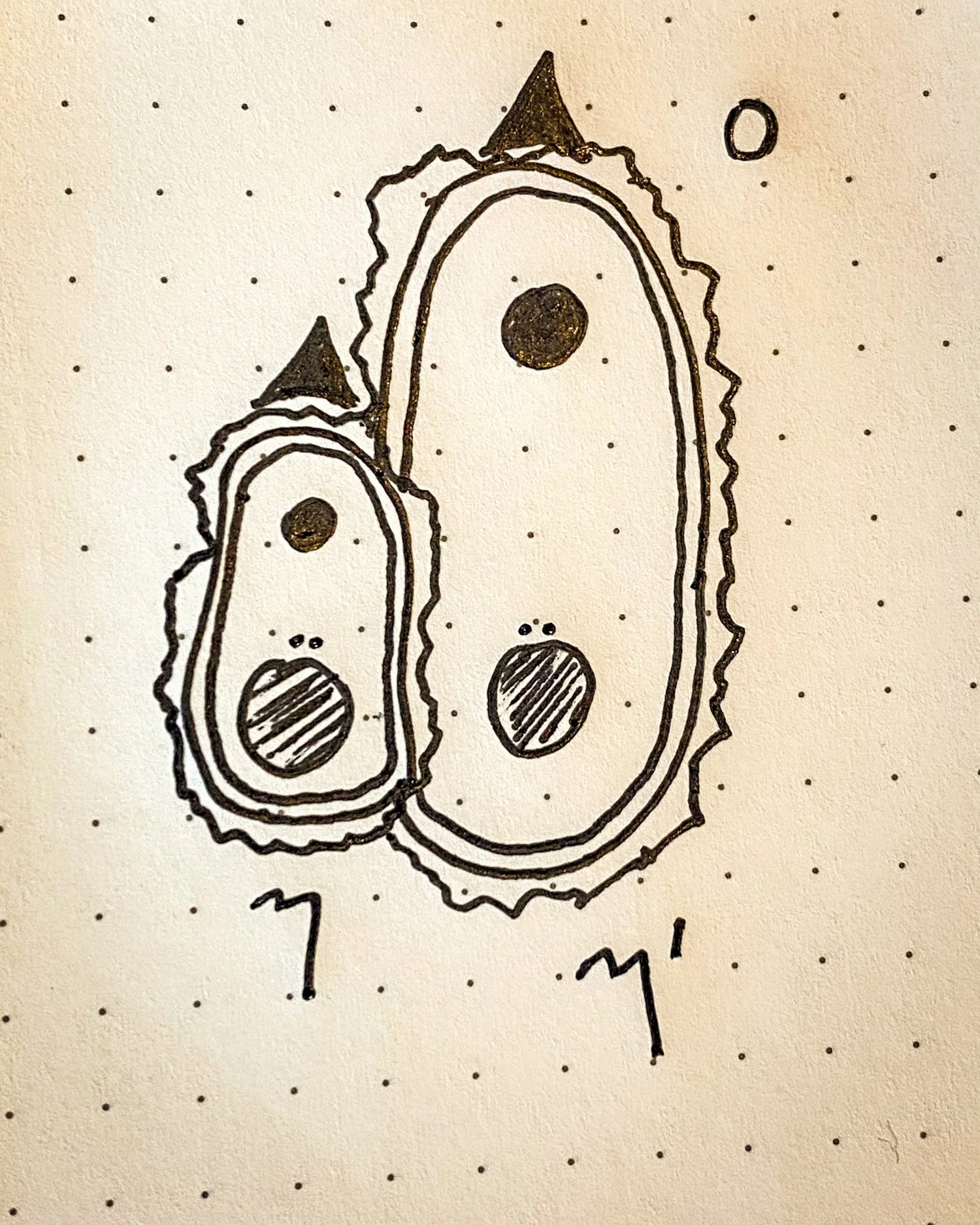
The Eta and Eta Prime Mesons
The η and η′ particles are a pair of electrically neutral particles that were - for a moment anyway - the center of a fierce debate among physicists. That debate ended as quantum chromodynamics - the mathematical theory which describes how quarks and gluons interact - was enshrined into the standard model of particle physics.Those mathematical details involved in describing eta and eta prime are almost as fierce as the debate over how they worked. And those details are what we’ll describe today.
With the strange quark, three are three kinds of quarks that can combine into all sorts of particles: up, down and strange. Of course, they each have antiparticle partners: antiup, antidown and antistrange with opposite electric charge.
Mesons are particles that mix quarks and antiquarks. The neutral pion is a pretty clean mixture of direct quarks/antiquarks pairs: up-antiup with down-anti-down.
Nature can also make nice, clean, symmetric combinations of all three quarks: up-antiup, down-antidown, strange-antistrange. Actually, it can make two of them, because, you know, strangeness. Those two combinations are known as the eta and eta-prime mesons, respectively.
Like the π0, both η and η′ have zero electric charge, but these strange mesons are heavy. η itself weighs in at 547 MeV, a good four times the mass of the neutral pion. η′’s mass is an outrageous 957 MeV, heavier than both the proton and the neutron.
The reason the η mesons are so heavy is related to the fact that the neutral pions decay so quickly.
You might remember that the neutral pions decay much faster than the charged pions. In some sense, the charged pions are protected from decaying by the conservation of charge. To be precise, π0 mesons decay via the chiral anomaly. Quantum mechanics gives rise to sudden host of all the quarks appearing all at once which vaporizes into a pair of photons.
Like the pions, the η and η′ mesons are electrically neutral. They have no electric charge to conserve and also decay through that quantum mess at at a much more reasonable 10−19 and 10−21 seconds , respectively.
The lighter, eta meson typically decays just like the neutral pion, that is into a pair of photons. Sometimes it will decay into triplet of pions! Either all three π0 or one of each, π+, π- and π0.
The heavier, η′ meson typically decays into the η and a pair of pions: oppositely charged or neutral. Not infrequently, eta prime will decay instead to a photon plus an unstable, neutral ρ0 meson, which is like the neutral pion, except its constituent quark antiquark pairs are orbiting each other.
The same mess of quantum effects that causes all these neutral mesons to decay quickly has one more interesting effect on the eta and eta prime mesons. It explains their heavy masses.
The cloud of quantum particles - all those quarks appearing all at once - collectively act to impede their physical motion through space. Physicists have a word for this phenomena. It’s called a mass.
Different particles experience this mess in different ways, which explains their different masses. The pions barely notice. The η meson feels it a bit. The η′ meson feels it the most, which is also why it is the heaviest of the bunch.
The debate amongst particle physicists amounted to precisely how these masses came about, and how the Chiral Anomaly was involved. We now understand that the quantum mess of quarks which causes the pi zero and eta to decay to photons and which gives eta prime its enormous mass, are related to instantons - which are like kinks, wrinkles and textures in the quantum subnuclear goo we’ve been talking about. You know, that amorphous stuff that surrounds all these quarks inside particles.